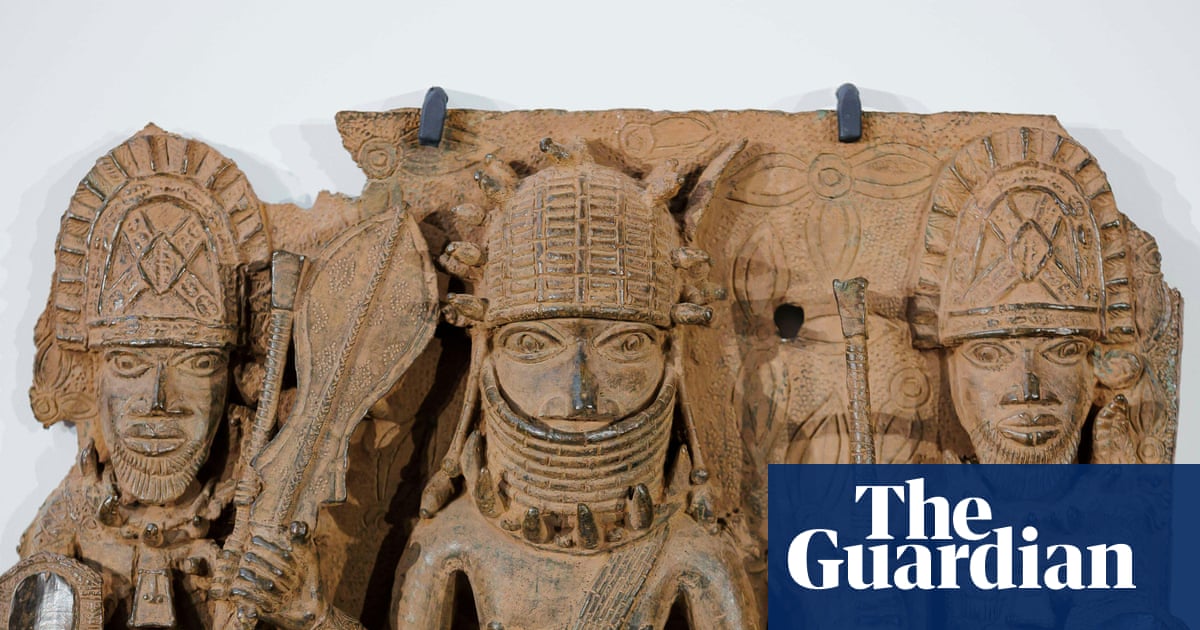In a corner of the new Museum of West African Art, visitors can marvel at a sample display of the cultural treasures that adorned the royal palace that once stood in its place: a proud cockerel, a plaque with three mighty warriors, a bust of a king with a glorious beaded collar.
The artefacts, collectively known as the Benin bronzes, were looted by British colonial forces who went on to burn down the palace in a punitive expedition in 1897. In the decades that followed they were scattered across collections in Europe and America.
View image in fullscreen Neil Curtis, head of collections at the University of Aberdeen, with a bronze sculpture depicting an oba (king) of Benin in 2021. Photograph: Courtesy of University of Aberdeen
Their return and public display inside the $25m (£19m) state-of-the-art museum in the city of Benin in Nigeria’s Edo state, co-funded by European governments and western enterprises, was to be the crowning moment of an almost century-long effort to reclaim Africa’s stolen art.
Yet when MOWAA opens its doors on 11 November, the only Benin bronzes on display will be clay replicas – a far cry from the “most comprehensive display [of Benin bronzes] in the world” touted by authorities when plans for the museum to become their home were announced in 2020.
About 150 original bronzes have been returned to Nigeria over the last five years, some on the initiative of private collections and some as acts of state by Germany and the Netherlands.
Continue Reading on The Guardian
This preview shows approximately 15% of the article. Read the full story on the publisher's website to support quality journalism.
